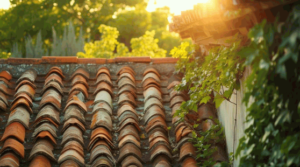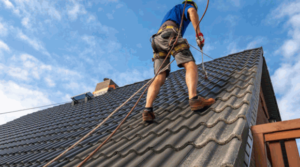Retrofit lighting is changing how we illuminate spaces, combining efficiency with sustainability. As older lighting systems become obsolete, retrofitting offers a smart, cost-effective solution to upgrade without the need for complete overhauls.
This article explores the significance of retrofit lighting and its varied types—like LED, CFL, and halogen—alongside their benefits, compatibility factors, and installation processes.
Essential safety precautions will also be discussed, along with a look into the future of this transformative technology. Discover how retrofit lighting can enhance your environment!
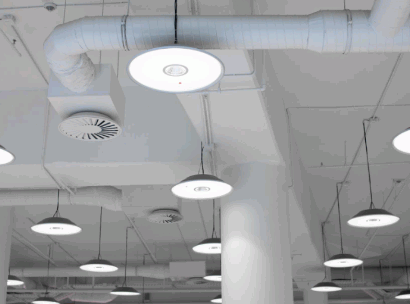
What Is Retrofit Lighting?
Retrofitting lighting refers to the process of updating or replacing existing lighting systems with advanced technologies, such as LED retrofit solutions, which offer significant improvements in energy efficiency and lighting quality.
This method incorporates the use of modern lighting fittings designed to meet the operational requirements of various facilities, ensuring that aesthetic appeal is not compromised while enhancing overall functionality.
Uncover more: Is LED Lighting Sustainable
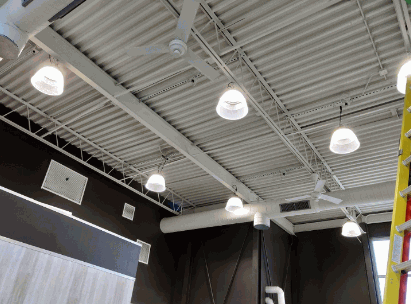
Why Is Retrofit Lighting Important?
Retrofitting lighting is crucial for modern facilities as it not only enhances energy efficiency but also helps reduce operating costs through lower maintenance expenses and energy bills.
By upgrading to advanced lighting solutions, facilities can significantly improve their lighting quality while contributing to sustainability and reducing their environmental impact.
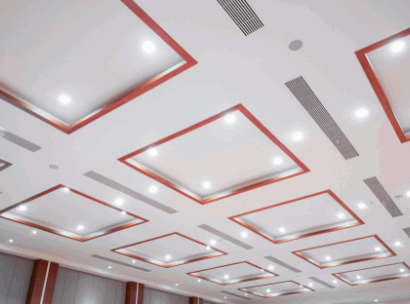
What Are The Benefits Of Retrofit Lighting?
The benefits of retrofit lighting are numerous, ranging from improved lighting quality and energy efficiency to reduced maintenance costs and increased productivity in the workplace. By implementing energy-efficient solutions, facilities not only save on energy bills but also enhance the overall visual appeal of their environments.
One of the primary advantages of retrofit lighting is its remarkable energy efficiency, which significantly reduces operational costs. Facilities can expect to lower their energy consumption by replacing outdated systems with modern alternatives, which often utilise LED technology. This transformation results in less energy wasted, leading to:
- Cost-effectiveness: This means notable reductions in utility expenses over time.
- Enhanced productivity: Well-lit environments foster better concentration and morale among employees.
- Longevity: LEDs typically have extended lifespans, minimising the frequency of replacements and maintenance efforts.
- Aesthetic enhancements: Modern fixtures not only function optimally but also contribute to a more inviting and stylish atmosphere.
All of these factors combined create a workspace that is not only cost-effective but also visually pleasing and conducive to higher performance.
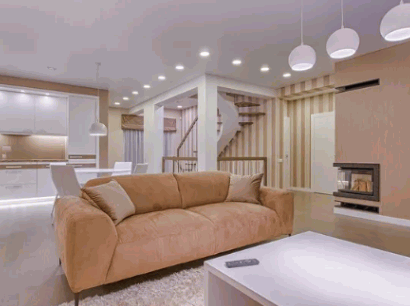
What Are The Different Types Of Retrofit Lighting?
There are several types of retrofit lighting available, each offering unique features and benefits tailored to different applications, including:
- LED retrofit lighting
- CFL retrofit lighting
- Halogen retrofit lighting
- HID retrofit lighting
Understanding these options is essential for an effective fitting replacement that meets the specific needs of various facilities.
LED Retrofit Lighting
LED retrofit lighting is a highly sought-after lighting technology, known for its energy-efficient properties and long lifespan, making it a popular choice for many retrofit projects. With advancements like smart LED technology, facilities can achieve optimal lighting quality while significantly reducing energy consumption.
Plus these benefits, the integration of LED retrofits can lead to substantial cost savings over time, as they often require less frequent replacements compared to traditional lighting options. This means fewer maintenance costs and labour involved in changing bulbs, which can accumulate significantly in commercial settings.
- For example, a manufacturing plant that switched to LED retrofits reported a 60% decrease in energy costs within months.
- Similarly, a retail store experienced a significant boost in foot traffic, attributing this to the enhanced visibility and ambience created by upgraded lighting.
With the ability to integrate smart technology, facilities can tailor their lighting systems to match real-time needs, adjusting brightness and even colour temperature based on occupancy or time of day.
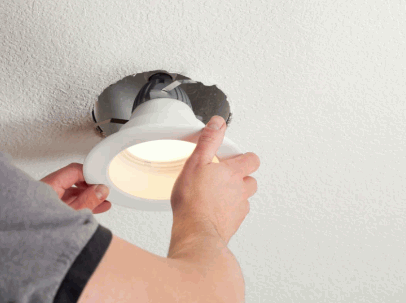
CFL Retrofit Lighting
CFL retrofit lighting provides a compact fluorescent option for facilities looking to upgrade their existing fluorescent lamps, such as T8 tubes, to more energy-efficient alternatives. These solutions offer significant energy savings while retaining the familiar form factor of traditional lighting.
Plus reducing energy consumption, CFL retrofit options enhance lighting quality through improved colour rendering and reduced flicker. This upgrade is especially beneficial for environments requiring consistent illumination, such as offices and retail spaces, where customer experience plays a crucial role.
- For instance, in warehouses, using CFL retrofits can lead to lower electricity bills and longer bulb life.
- Schools may also find it valuable, as they can save funds on energy that can be redirected towards educational programmes.
These retrofits are compatible with existing fluorescent fittings, ensuring a hassle-free installation and immediate impact. This means that organisations can enjoy the dual benefits of energy efficiency and a seamless transition without the need for extensive rewiring or fitting changes.
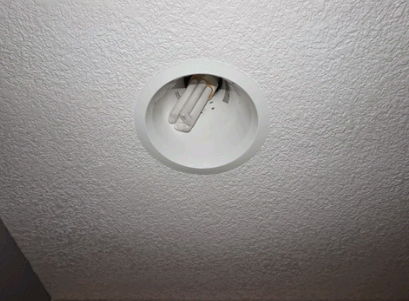
Halogen Retrofit Lighting
Halogen retrofit lighting is an effective choice for enhancing the aesthetic appeal of various spaces while providing improved lighting quality compared to traditional incandescent options. These retrofits consume less energy and offer better colour rendering, making them suitable for both residential and commercial applications.
The versatility of halogen retrofit lighting allows it to complement a wide range of interior designs, from modern to classic styles.
- With their ability to create a warm ambience, these lights are particularly favoured in living rooms and dining areas.
- They work well in retail environments, showcasing products with enhanced visibility.
- It’s essential to consider that while they provide significant energy savings, halogen bulbs can produce more heat than their LED counterparts.
Ultimately, the choice to employ halogen retrofit lighting often depends on specific lighting needs and existing fitting compatibility.
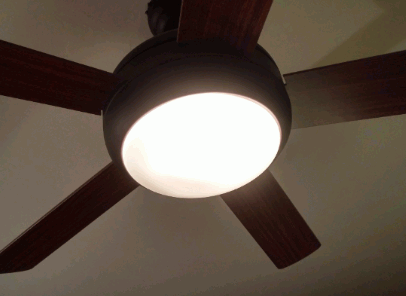
HID Retrofit Lighting
HID retrofit lighting is primarily utilised in industrial applications, providing high-intensity illumination perfect for large spaces such as warehouses and factories. These retrofits can greatly improve energy efficiency while ensuring proper lighting levels are maintained.
Plus enhanced brightness, the features of HID retrofit lighting include versatile compatibility with existing fixtures, making the transition smoother and more cost-effective. This means that businesses do not necessarily have to invest in entirely new lighting systems, which can be a substantial financial burden.
When implemented correctly, these upgrades can lead to significant reductions in energy costs, often exceeding:
- 50% savings on electricity.
- Longer operational lifespans compared to traditional lighting.
- Decreased maintenance expenses due to fewer bulb replacements.
Achieving the right lighting levels is essential for safety and productivity in industrial settings. Proper fixture replacement ensures that areas are uniformly illuminated, thereby reducing shadows and improving visibility for workers engaged in critical tasks.

How Does Retrofit Lighting Work?
Retrofitting lighting works by integrating modern solutions into existing fittings, thus transforming traditional lighting systems into energy-efficient setups without requiring complete replacements.
This approach often incorporates advanced lighting controls and technologies designed to enhance the overall lighting experience.
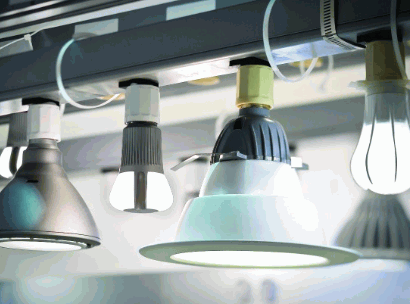
What Are The Steps For Retrofitting Lighting?
The steps for a successful retrofit project include assessing current lighting systems, selecting appropriate fixtures for replacement, and considering potential energy rebates to offset costs. Proper facility management during this process ensures that the transition is seamless and efficient.
Initially, one must conduct a thorough energy audit to identify inefficiencies and determine the scope of improvements required. Following this, the next critical step involves:
- Researching available lighting options, ensuring they align with both energy efficiency goals and aesthetic requirements.
- Engaging stakeholders to gather input and facilitate buy-in for the project.
Once suitable fixtures have been chosen, it’s time to review:
- local regulations and codes for compliance.
- incentives from utility providers or government programmes that could significantly reduce installation costs.
The installation phase should be coordinated carefully with the facility management team to minimise disruptions and ensure that all new systems are functioning optimally post-project completion.
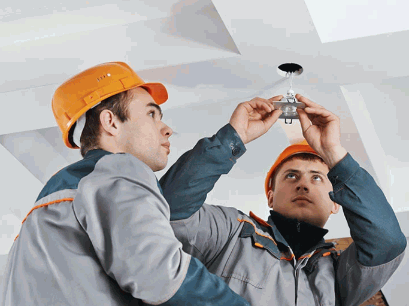
What Are The Factors To Consider For Retrofit Lighting?
When considering retrofitting lighting, several factors come into play, including energy efficiency, cost implications, compatibility with existing fittings, and ongoing maintenance requirements.
Understanding these elements is crucial for determining the best lighting upgrades for a facility.
Energy Efficiency
Energy efficiency is a top priority when considering retrofit lighting, as it directly impacts energy consumption and long-term energy savings. By transitioning to energy-efficient lighting solutions, facilities can significantly reduce their environmental impact.
Plus minimising energy use, energy-efficient lighting plays a crucial role in overall operational cost reductions. One effective way to gauge efficiency is through the use of metrics such as:
- lumens per watt (lm/W)
- annual kilowatt-hour (kWh) savings
- return on investment (ROI)
These measurements allow facilities to establish clear benchmarks and track improvements over time. The cumulative savings from adopting these systems can lead to substantial reductions in utility bills, promoting economic sustainability. With the right approach, not only does efficiency enhance workplace productivity through better illumination, but it also minimises maintenance costs, making it an all-encompassing solution for modern facilities.
Cost
Cost is a critical factor in retrofit lighting, as organisations must weigh initial investment against potential savings in maintenance costs and reduced energy bills. A cost-effective approach ensures that facilities maximise their return on investment.
To effectively assess the cost-effectiveness of various retrofit options, organisations should consider several key aspects. First, an accurate analysis of the initial costs is essential, which may include equipment purchase and installation fees. Assess long-term savings from energy efficiency. This can be done by conducting a detailed energy audit and comparing the average annual energy consumption before and after the retrofit.
- Consider available financial incentives such as rebates or tax credits that can significantly offset initial expenses.
- Evaluate how different financing options might impact overall costs.
For instance, an organisation might find that investing in LED lighting not only reduces electricity bills but also qualifies for local utility rebates, enhancing the overall financial appeal.
Compatibility
Compatibility with existing fittings is essential in retrofit lighting projects, as it determines the feasibility of upgrading to new technologies without extensive renovations. Ensuring proper fitting replacement can lead to improved lighting solutions tailored to specific needs.
When embarking on a retrofit project, evaluating the compatibility offers numerous advantages, enhancing both performance and efficiency. First, consider these essential factors:
- Fitting Size and Shape: Ensure that the new fittings can fit seamlessly within the existing space without obstruction.
- Wattage and Lumens: Assess how the output of the new fittings aligns with the current needs to avoid under-lighting or over-lighting.
- Style and Aesthetics: The visual appeal of chosen fittings should harmonise with existing décor to maintain an appealing environment.
By attending to these elements, stakeholders can select replacements that not only connect with existing frameworks but also elevate the lighting experience overall.
Maintenance
Maintenance is a vital consideration in retrofit lighting, with many modern solutions designed for low maintenance and featuring a long lifespan. This aspect can significantly influence operational requirements and overall cost-effectiveness.
When organisations opt for retrofit lighting systems, they tap into an array of advantages that not only streamline their maintenance processes but also bolster overall productivity. By minimising the frequency of replacements and upgrades, these systems enable facilities to allocate resources more efficiently and enhance the working environment. The benefits include:
- Enhanced Reliability: Modern lighting solutions reduce the likelihood of malfunctions.
- Economic Savings: Lower energy consumption leads to reduced utility bills.
- Improved Safety: Consistent and reliable lighting minimises hazards in workspaces.
By focusing on these low-maintenance solutions, businesses can prioritise their operational goals while ensuring a well-lit, pleasant atmosphere for their employees.
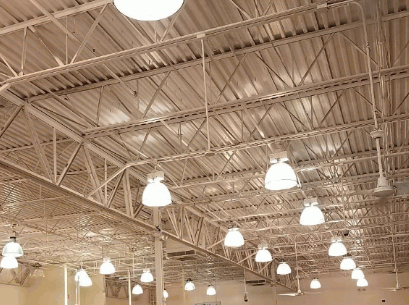
What Is The Process For Retrofitting Lighting In A Building?
The process for retrofitting lighting in a building involves a systematic approach that begins with a comprehensive assessment of current lighting systems, followed by selecting appropriate replacement fittings and implementing advanced lighting solutions. Effective facilities management throughout this process ensures minimal disruption and maximum efficiency.
Initially, it’s important to conduct an audit of the existing systems, identifying areas of inefficiency and any outdated technologies that may be in use. After this evaluation, lighting consultants play a pivotal role in developing a structured plan that aligns with the building’s specific requirements and energy goals.
- Next, the selection of suitable fittings is critical, taking into account factors such as aesthetics, energy consumption, and the overall lighting strategy.
- Once the fittings are chosen, the actual installation phase can proceed, ensuring that all safety protocols are adhered to for seamless execution.
- Following installation, continuous management is essential, involving regular assessments to monitor performance and ensure that the new systems function as intended.
Incorporating advanced features like smart controls can further enhance energy savings, validating the initial investment and promoting sustainable practices.
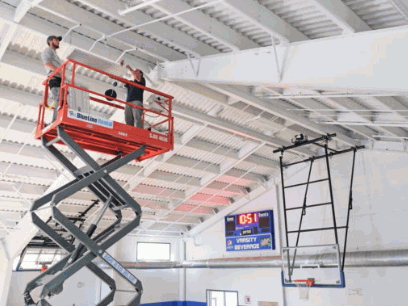
What Are The Safety Precautions For Retrofit Lighting?
Safety precautions are paramount when undertaking retrofit lighting projects, particularly regarding electrical services and installation procedures. Ensuring compliance with industry standards helps mitigate risks associated with energy-efficient lighting upgrades.
It’s not just about compliance; the safety of workers and the end-users must always be at the forefront.
Here are some critical precautions to consider:
- Always de-energise circuits before beginning any installation to prevent shock or injury.
- Use personal protective equipment (PPE), such as gloves and goggles, to minimise risks.
- Follow local electrical codes and guidelines, which can vary by region.
- Consult the National Electrical Code (NEC) to ensure that all installations are up to standard.
- Conduct regular maintenance checks post-installation to identify any potential hazards early on.
While the allure of energy-efficient lighting is strong, neglecting safety protocols can lead to serious consequences. Adhering to best practices not only safeguards individuals but also contributes to the longevity and reliability of the lighting system.
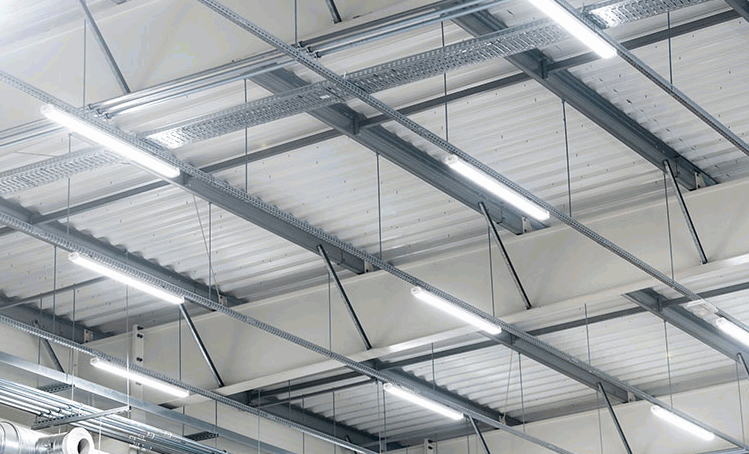
What Is The Future Of Retrofit Lighting Technology?
The future of retrofit lighting technology looks promising, with innovations such as smart LED technology paving the way for further advancements in energy efficiency and sustainability. These trends indicate a growing emphasis on integrating intelligent systems into lighting solutions for better resource management.
As businesses and homeowners become increasingly conscious of their energy consumption, they are actively seeking smart solutions that not only reduce costs but also lower their environmental footprint.
Some of the key trends shaping the industry include:
- Adaptive Lighting: Systems that automatically adjust the brightness based on natural light levels.
- Connected Devices: Integration with IoT, allowing for remote monitoring and control.
- Energy Monitoring: Real-time tracking of energy consumption to optimise usage.
The intersection of technology and sustainable practices heralds a new era for lighting, where efficiency and environmental responsibility go hand in hand.

